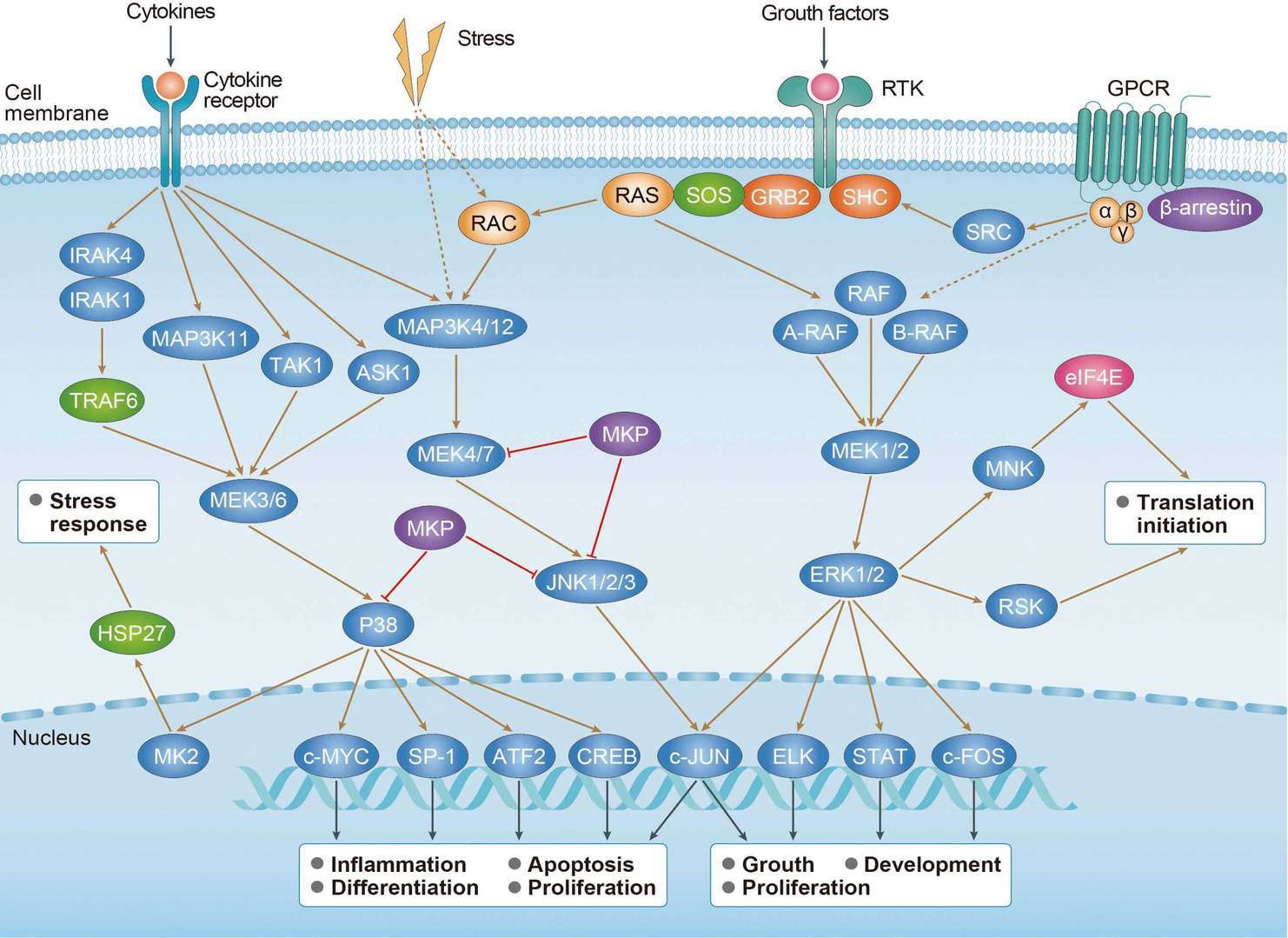 Loading...
Loading...

RARA
Cancer-related genes, Disease related genes, FDA approved drug targets, Nuclear receptors, Plasma proteins, Transcription factors
Intracellular
Low cell type specificity
Immune cell enhanced (neutrophil)
Cell line enhanced (MCF7)
Heterodimer; with RXRA (via C-terminus); association with RXRA is enhanced by pulsatile shear stress (PubMed:28167758, PubMed:10698945, PubMed:10882070, PubMed:20215566, PubMed:15509776). Binds DNA preferentially as a heterodimer (PubMed:10698945, PubMed:28167758). RXRA serves as enhancer to induce RARA binding to RARE (PubMed:30468856). Interacts with RXRG (PubMed:28167758). Interacts with coactivators NCOA3 and NCOA6 (PubMed:9267036, PubMed:10567404). Interacts with NCOA7; the interaction requires ligand-binding (PubMed:11971969). Interacts (via the ligand-binding domain) with PRAME; the interaction is ligand (retinoic acid)-dependent (PubMed:16179254). Interacts with AKT1; the interaction phosphorylates RARA and represses transactivation (PubMed:16417524). Interacts with PRKAR1A; the interaction negatively regulates RARA transcriptional activity (PubMed:20215566). Interacts with NCOR1 and NCOR2 (PubMed:20543827). Interacts with PRMT2 (PubMed:12039952). Interacts with LRIF1 (PubMed:17455211). Interacts with ASXL1 and NCOA1 (PubMed:16606617). Interacts with ACTN4 (PubMed:22351778). In a complex with HDAC3, HDAC5 and HDAC7; the HDACs serve as corepressors of RARA, causing its deacetylation and inhibition of RARE DNA element binding; association with HDAC3, HDAC5 and HDAC7 is increased upon oscillatory shear stress (PubMed:28167758). Interacts with CDK7 (By similarity). In the absence of hormonal ligand, interacts with TACC1 (PubMed:20078863).
DNA-binding, Receptor
- Rabbit Anti-RARA Polyclonal Antibody (MRO-2153-CN) (MRO-2153-CN)
-
- Species Reactivity: Human, Mouse, Rat
- Type: Rabbit IgG
- Application: WB, IF, IHC, FC
-
- Species Reactivity: Human, Mouse
- Type: Rabbit IgG
- Application: WB, FC
-
- Derivation: Mouse
- Species Reactivity: Human
- Type: Mouse IgG2a, κ
- Application: WB, ELISA, ICC, IF, IHC
-
- Derivation: Phage display library screening
- Species Reactivity: Human
- Type: IgG
- Application: WB, FC
-
- Species Reactivity: Human
- Application: ICC/IF, IHC-P, WB, sELISA
-
- Species Reactivity: Human, Mouse
- Type: Rabbit IgG
- Application: WB, FC
-
- Species Reactivity: Human
- Type: Rabbit IgG
- Application: ELISA, IHC
Our customer service representatives are available 24 hours a day, from Monday to Sunday. Contact Us
Can't find the products you're looking for? Try to filter in the left sidebar.Filter By Tag
For Research Use Only. Not For Clinical Use.

 cAMP Signaling Pathway
cAMP Signaling Pathway